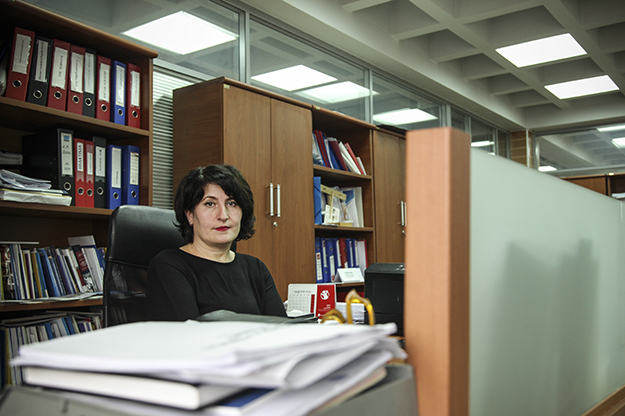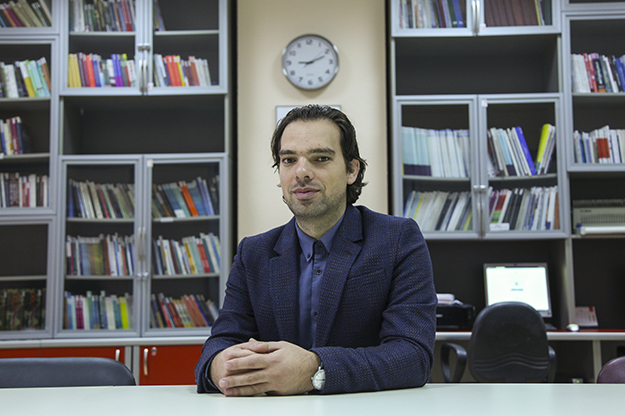“When you educate a girl, you educate an entire nation.” This is one of the most frequent sayings found in reports and publications related to the education of girls. With just a click on the Internet, one will get thousands of articles on the need for and the importance of educating young girls, something that still remains a global challenge.
The American leader in the Latter Day Saints movement Brigham Young is believed to have been the first person to use this saying in 1847, in order to raise awareness of the importance of equal education for both boys and girls. Education, as he put it, is the power to think clearly, the power to act well in the world’s work, and the power to appreciate life.
Such a stance is more or less shared by contemporary leaders, including those from Kosovo, both in their election campaign speeches and during the annual days dedicated to girls and women. But how much is actually being done in order to provide equal education for girls and boys?
Kosovo brags of having managed to draft a genuine framework that guarantees gender equality. The Law on Gender Equality guarantees equal opportunities and treatment, in the public and private spheres, for “both men and women,” including equality in public and political life, in employment, education, health, economy, social benefits, sport and culture.
When it comes to education, the situation with gender equality — on paper — is not bad at all, for the statistics speak of satisfactory participation. If you look at the data from the Ministry of Education, Science and Technology (MEST), participation of girls in education is virtually the same as that of boys. Fifty percent of students registered at universities in Kosovo are girls, up from 47 percent in 2010/11, while of 374,407 pupils in pre-university education 180,211 (or 48 percent) are girls.
Also in terms of dropping out, girls in Kosovo are less prone to quitting education at high school level compared to boys. Last year the high school dropout rate for girls was 48 percent, whereas for boys it was 52 percent. The higher figure for boys can in part be attributed to socio-economic conditions, with difficult economic conditions and a particular pressure on boys to abandon education in order to work and help generate income for their families.
Inequality in employment
While participation levels in Kosovo’s education system are similar in terms of gender, the country’s labor market is dominated by men. According to the “Women and men in Kosovo 2014/2015” report published this month by Kosovo Agency of Statistics (ASK), the employment rate for men was 39 percent but just 12 percent for women.
Survey data on Kosovo’s labor force during the first quarter of 2016, shows that 30 percent of women were unemployed, compared to 27 percent of men, while unemployment amongst 15- to 24-year-olds was 54 percent. However these statistics only consider those who are considered ‘active’ in the labor market; 83 percent of women and 47 percent of men are considered ‘inactive,’ meaning that they are not even seeking a job.
The participation of Kosovar women in the labor market is estimated to be the lowest in Europe, despite the fact that Kosovar girls tend to do better than boys in the classroom. This was reflected in the recently announced results of the international PISA assessment of 15-year-olds. While the results were disappointing overall — with Kosovo ranked in the bottom five countries globally — girls scored 36 points more than boys in reading and nine points more in science, with boys only outperforming girls in math.
According to Merita Jonuzi from MEST’s department for equal opportunities, who also pointed out that 77 percent of girls in grades 10 to 12 achieved grades considered ‘excellent,’ ‘very good’ or ‘good,’ the relatively positive education figures for girls compared to boys should translate into opportunities in the labor market. “Since girls are showing success in education, their opportunities in the labor market should be satisfactory as well,” she says.

Merita Jonuzi says that as girls are outperforming boys in Kosovo, they should also have satisfactory opportunities in the labor market.
Such logic is rejected by Kosovo Center for Gender Studies’ Luljeta Demolli, who suggests that inequality in the labor market is due to ingrained socio-cultural reasons. “Family duties and responsibilities, as well as looking after other family members are continuously mentioned as reasons behind the inactivity of women in labor market,” she says. “Nonetheless, those are not the only reasons. This inactivity is also linked to discrimination at work.”
According to Demolli, women are regularly discriminated against because of their gender, marital status or family responsibilities. “In fact, the gender issue in employment becomes even more problematic for women in reproductive years, [during which unemployment rates already reach] an alarming 44.3 percent for women and men aged 25-34,” she says. “During job interviews one can still be asked classic discriminatory questions, such as, ‘Are you married?’ and, ‘How many children do you have?’”
Unequal preparation
For those women that are employed, there is a noticeable divide between industries in which they are likely to be employed, and those still considered a male domain. The ASK report for the first quarter of 2016 shows that 51 percent of employed women work in the education, trade or healthcare sectors, whereas employed men are largely (44 percent) employed in production, trade and construction.
Such gender division of labor begins at school, when children are making their educational choices. According to Jonuzi, there are noticeable trends in terms of subjects pursued. “When it comes to vocational education, things differ according to preferences for certain professions,” she says.
The ministry’s data confirms that when it comes to vocational education, girls mainly choose educational routes that lead to professions considered more apt for women, such as natural science and math high schools, language and social science high schools, technology, medicine, food technology, design, economy, law, administration and architecture; they are much less likely than boys to pursue routes such as construction, catering, tailoring or hair-dressing. “And there are very few of those who choose agriculture, mechanical engineering, electrical engineering and similar,” says Jonuzi.
Demolli suggests that the evident tendency towards a labor force divided along gender lines is a result of an inherited mindset of regulating public life in Kosovo that must be challenged. “Our institutions are not looking for innovative ways to organize the work by expanding sectors for both genders, which could be achieved by providing different atypical jobs,” she says. “For example, there is no man in Kosovo working in our kindergartens.”
Petrit Tahiri from Kosovo Education Center (KEC) agrees that educational programs are failing to prepare girls equally for the labor market and that statistics relating to the participation and performance of girls in education do not reflect equality of educational provision. “For instance, you can see that few girls chose technical fields and as a result we have a huge number of girls [working] in education and healthcare,” he says. “The opportunities in terms of access to education are equal but current education programs do not guarantee this equality because they provide conditions which favor boys over girls, because those are programs for the vocations that are considered to be for men.”

Petrit Tahiri suggests that Kosovo’s education system is not providing girls with equal opportunities to enter the labor market.
KEC’s 2014 research titled “Citizenship concepts among Kosovo students” illustrates students’ attitudes to equal opportunities in education and employment, through a survey of 1,700 eighth grade students. When it comes to students’ perceptions regarding life opportunities, 96 percent agreed that boys and girls should have equal opportunities to participate in the government. The research also showed that 95 percent of those surveyed agreed that boys and girls should have equal rights in every aspect, with an almost equal gender distribution amongst those responses.
Nevertheless, in other questions, where the students were asked whether they agreed with statements such as, ‘Men should have more rights to employment than women when employment opportunities are scarce,’ ‘Men and women should be paid equally when they do the same job’ and ‘Men are more qualified than women to become political leaders,’ the picture was less clear-cut. Twenty-two percent of the students agreed that ‘Women should stay away from politics,’ including 16 percent of female respondents.
Such attitudes perhaps reflect a lack of women role models in Kosovo’s patriarchal society, with women less likely to work in decision-making positions than men. Until that changes, experts suggest that equality in education, and consequently in the labor market, is likely to remain on paper only.K
Photos: Majlinda Hoxha / K2.0.



